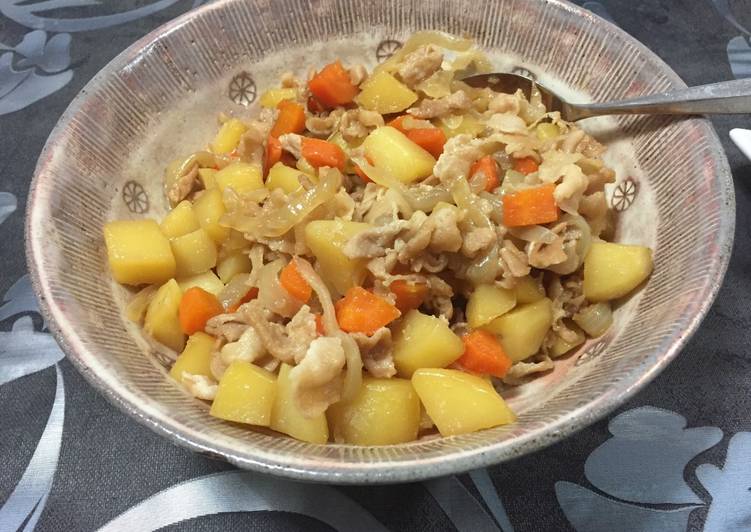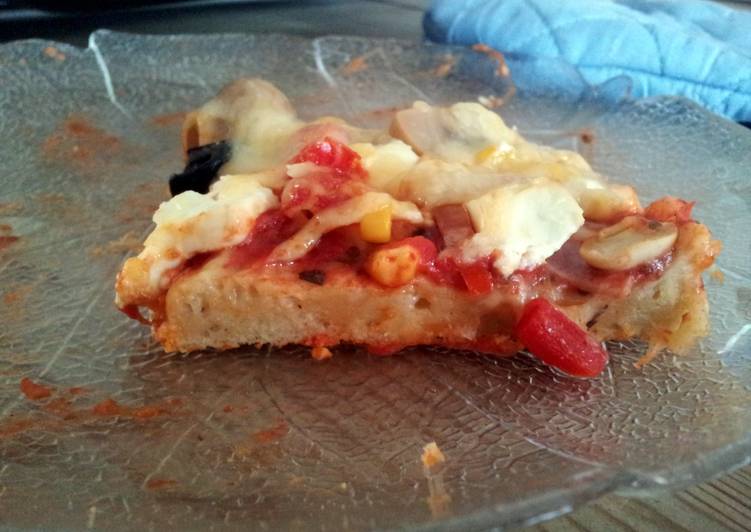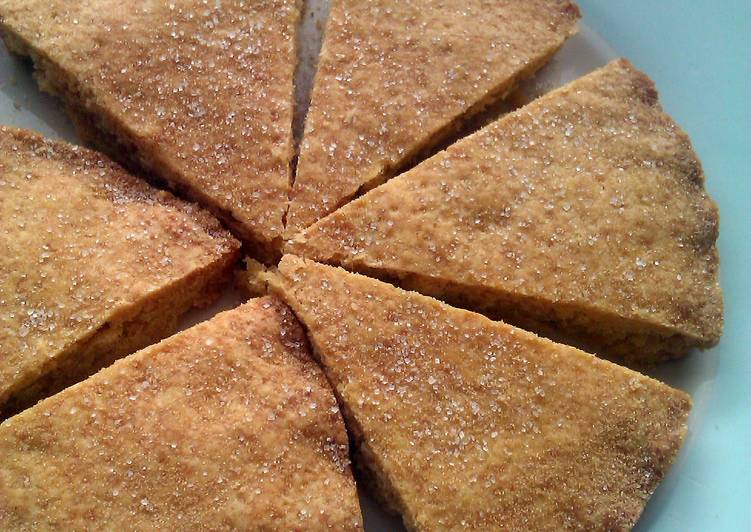
Hello everybody, it’s Louise, welcome to my recipe page. Today, I will show you a way to prepare a special dish, japanese nikujaga (sliced pork and potatoes). It is one of my favorites food recipes. This time, I am going to make it a bit tasty. This will be really delicious.
Japanese Nikujaga (Sliced pork and Potatoes) is one of the most favored of current trending foods in the world. It’s simple, it’s quick, it tastes delicious. It is appreciated by millions every day. They’re fine and they look fantastic. Japanese Nikujaga (Sliced pork and Potatoes) is something which I’ve loved my entire life.
Nikujaga (Japanese: 肉じゃが) literally means "meat and potatoes", from two of the main ingredients niku (meat) and jagaimo (potatoes). Now please click HERE to check out the recipe. Here's Nikujaga with thinly sliced pork belly. Don't want to miss a recipe?
To begin with this particular recipe, we have to first prepare a few ingredients. You can cook japanese nikujaga (sliced pork and potatoes) using 11 ingredients and 16 steps. Here is how you can achieve that.
The ingredients needed to make Japanese Nikujaga (Sliced pork and Potatoes):
- Get Potatoes
- Make ready Sliced Pork (or Silced Beef)
- Prepare peice Onion
- Get peices Carrot (If you buy Japanese carrot, it's OK 1 peice)
- Prepare salad oil
- Take <Sauce>
- Get Water
- Prepare Suger
- Make ready Sake(cooking rice wine)
- Prepare Mirin
- Make ready Soy Sauce
Potatoes used in Nikujaga are anything you like. If you like soft and fluffy, use Russet potatoes. Some parts of Japan use pork for Nikujaga, I hear. When beef was more precious back then We use thinly sliced beef for a lot of different dishes in Japan.
Steps to make Japanese Nikujaga (Sliced pork and Potatoes):
- Cut the potatoes into bite-size pieces, soak them in water and drain.
- Peel the first 2 layers off the halved onion and cut into 7 to 8 mm wedges. Cut the carrot into small bite-size pieces.
- Cut the sliced pork 5 to 6 cm.
- Heat te salad oil and add the potatoes. When the potato eadges become transparent, add the onios and carrots. Give the oil time to absorb the flavor, and then add the pork.
- When the meat begins to chane color, sprinkle the 2 tbsp Sake and add 150 ml Water. Turn the heat to high.
- When it boils, turn the heat to medium and carefully reomove the scum. Add the 2 tbsp Suger, 3 tbsp Mirin and 5 tbsp Soy Sauce in thar order, and stir once.
- Put in a drop lid and cover with the frying pan lid. Simmer and stir occasionally for 15 miniutes until liquid is almost gone.
- Natire’s Nest Brastagi Potatoes Granola (Washed) SG$3.2/kg at FairPrice
- Tradition Shabu Shabu - Pork Belly (Frozen) SG$5.8/400g at Foodie Market
- Chef Yellow Onion - Large SG$1.45/700g at FairPrice
- Pasar Prepacked Carrotes SG$0.9/500g at FairPrice
- Japanese White Suger SG$3.5/kg at DonDon Donki
- Sake- Cooking Rice Wine SG$5~7/500ml at RedMart, Sakuraya, Dondon DONKI etc
- Hinode Hon Mirin SG$4.6/320ml at RedMart
- Soy Sauce - High recommend this soy sauce which is named Yamasa Konbutsuyu - SG$7~9/L at Dondon Donki, Mid Town Mart etc
Some parts of Japan use pork for Nikujaga, I hear. When beef was more precious back then We use thinly sliced beef for a lot of different dishes in Japan. If you go to Japanese grocery stores, you. Nikujaga, or meat and potatoes is an easy comforting Japanese stew made with beef, potatoes and carrots. My quick Nikujaga recipe comes together in under My version of this Japanese comfort food is loaded with melt-in-your-mouth tender slices of beef simmered together with sweet onions, and big.
So that’s going to wrap this up for this special food japanese nikujaga (sliced pork and potatoes) recipe. Thank you very much for reading. I’m confident you will make this at home. There is gonna be more interesting food at home recipes coming up. Remember to save this page on your browser, and share it to your loved ones, colleague and friends. Thanks again for reading. Go on get cooking!


